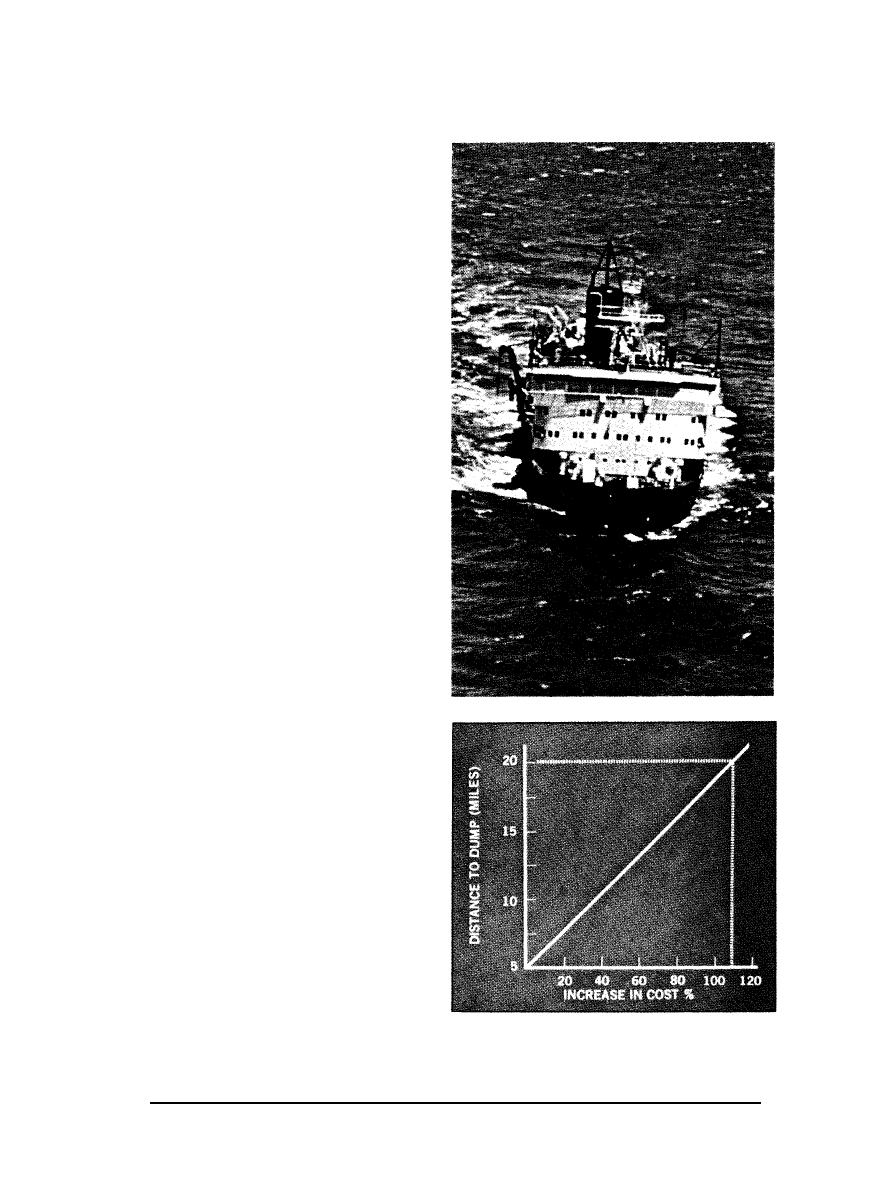
quences. Again, we simply do not know enough about the
effects of open-water disposal to determine the degree of
risk involved.
One approach to this problem is to dispose of the dredged
material in very deep water at great distances from the shore.
However, the cost of long-haul disposal increases drastically
with distance. The Corps has been faced with this alternative
in San Francisco Bay where constraints against traditional
open-water disposal have seriously affected maintenance
efforts.
This happened when other Federal agencies and the State
of California adopted suggested Environmental Protection
Agency (EPA) guidelines for pollution. The guidelines for
heavy metals, for example, provide that dredged material
containing levels in excess of those recommended should
not be placed in open water. However, the natural state of
certain spots in San Francisco Bay already exceeds EPA
guidelines for several heavy metal pollutants. Consequently,
if we pick up bottom material from these spots, we cannot
put it back in the bay.
The alternative is to take this small percentage of material
that exceeds EPA guidelines out to sea for disposal.
However, this increases unit dredge costs and the time re-
quired for normal maintenance dredging.
Reduced dredging in some vital channels could pose a na-
tional security problem as well. Without normal channel
depths, that part of the Pacific Fleet home-ported in the bay
area would have to be diverted to other refitting and resup-
ply berthing areas along the West Coast.
D
iked disposal offers major advantages absent in either
off-channel or open-water methods. This method can
be used to supply land fills for industrial or recreational
development. Additionally, by carefully controlling the
elevation profile, diked disposal areas can be used as wet-
lands. One limiting factor is environmental, since diked dis-
posal areas generally lie along a shoreline or are superim-
posed on natural wetlands and, consequently, are usually
controversial. Furthermore, the cost is high. For instance,
our diked disposal program in the Great Lakes will cost an
estimated 0 million over the next 10 years. Yet this same
amount of money would pay for 25 years of open-water dis-
posal in the Great Lakes.
Hopper dredges can dump into open ocean water, but cost of long-haul
disposal increases in direct proportion to distance from dredging site.
A typical problem with diked disposal can be illustrated by
the Cleveland Harbor project. Dredging on the Cuyahoga
River outlet is backlogged because the initial diked areas
have become filled in the Cleveland area. New diked areas
have not yet been completed. The delays are caused by
various factors, including environmental objections to the
newly selected sites. Only the currently high waters within
the Great Lakes, which have increased draft depths, are pre-
venting an immediate problem of serious magnitude.
Upland disposal, the fourth method of disposal, is often
suggested as an alternative by those who find the other 3 ob-
jectionable. Unfortunately, this method also has its disad-
vantages because it requires that considerable real estate be
taken out of the useful land inventory for a period of time.
For example, a small effort such as the river channel at West
Haven, Conn., involves only 81,000 cubic yards of dredged
material, but it requires over 20 surface acres for placement.
In high density population areas, even a parcel that small is
difficult to find within economic reach of the dredges and at a
reasonable price.
This method also causes some change in land configura-
tion, some disruption of the predisposal biotic community,
and almost always some opposition from landowners, com-
munities, developers, conservationists and a host of others
who disagree with the site selected for one reason or
another.
WATER SPECTRUM
5
A-5



 Previous Page
Previous Page
